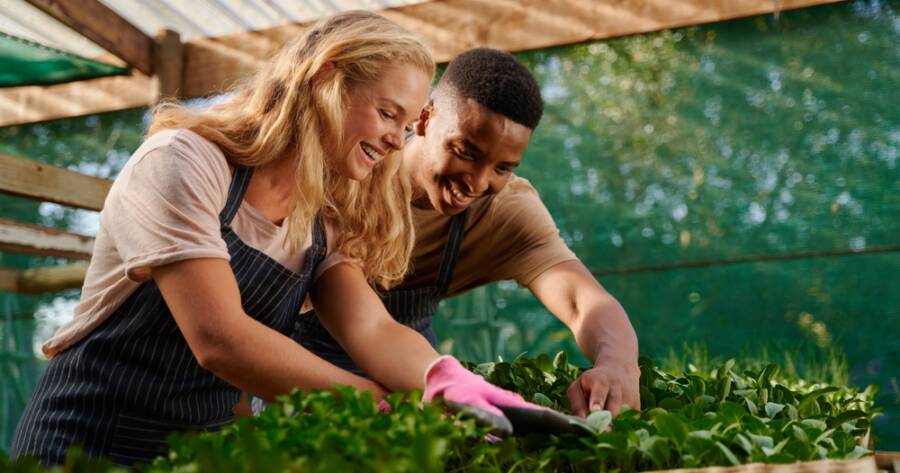Starting a garden is a rewarding way to add beauty to your home while enjoying the benefits of fresh air and homegrown plants. Whether you’re growing flowers, herbs, or vegetables, a little planning goes a long way in creating a thriving outdoor space. Understanding sunlight, soil quality, and proper watering techniques can make all the difference. With the right approach, even beginners can cultivate a lush, vibrant garden that flourishes season after season.
Choose the Right Location for Your Garden
The success of your garden starts with choosing the right location. Most plants, including vegetables and flowers, thrive with at least six hours of direct sunlight per day. Observe your yard to determine which areas receive the most sun and which stay shaded. Consider factors like wind exposure, drainage, and proximity to water sources when selecting your garden spot.
If space is limited, container gardening or raised beds are excellent alternatives for small yards or patios. Proper placement ensures your plants get the light and airflow they need to grow strong and healthy. Starting with the right location reduces maintenance and increases your chances of success, making gardening more enjoyable.
Know Your Soil and Improve Its Quality
Healthy soil is the foundation of a thriving garden. Before planting, test your soil’s pH and nutrient levels using an inexpensive kit from a garden center. Most plants prefer slightly acidic to neutral soil (pH 6.0–7.0). If your soil lacks nutrients, enrich it with organic matter like compost, aged manure, or peat moss to improve its structure and fertility.
Well-draining soil is also key to preventing root rot, so adding sand or perlite can help in heavy clay soil. Mulching with wood chips, straw, or grass clippings retains moisture and reduces weeds. Investing in soil health from the start leads to stronger plants and better harvests for years to come.
Start with Easy-to-Grow Plants
For beginners, it’s best to start with low-maintenance plants that are resilient and easy to care for. Herbs like basil, mint, and rosemary, flowers like marigolds, zinnias, and sunflowers, and vegetables like tomatoes, lettuce, and peppers are great choices. Check plant tags or seed packets to understand their specific needs, such as sun requirements and watering frequency.
Native plants are also an excellent option since they are adapted to your local climate and require less maintenance. Avoid overly delicate or finicky plants that may require advanced care. Choosing beginner-friendly plants sets you up for success and makes gardening a fun and rewarding experience.
Water Wisely and Consistently
Overwatering and underwatering are common mistakes that can harm plants. Most plants need deep but infrequent watering, allowing roots to grow strong and deep. Early morning is the best time to water, as it reduces evaporation and allows plants to absorb moisture before the heat of the day. Use a soaker hose or drip irrigation system for slow, even watering that reaches the roots.
Avoid watering leaves, as this can promote fungal diseases. For container gardens, check soil moisture frequently since potted plants dry out faster. Learning how to read your plants’ needs and adjusting watering habits accordingly ensures they stay healthy and resilient.
Feed Your Plants the Right Nutrients
Just like people, plants need proper nutrition to thrive. Fertilizing with the right nutrients keeps them strong, promotes blooms, and increases vegetable yields. Organic compost, worm castings, and fish emulsion are excellent natural fertilizers that provide balanced nutrients. Many plants benefit from slow-release fertilizers that gradually feed them over time.
Avoid over-fertilizing, as too much nitrogen can encourage leafy growth at the expense of flowers and fruit. Pay attention to plant-specific needs—for example, tomatoes need calcium to prevent blossom-end rot, while flowering plants may need phosphorus-rich fertilizers. Providing the right nutrients ensures your garden remains lush and productive.
Keep Up with Maintenance and Pest Control
Regular maintenance is essential for a thriving garden. Check plants daily for wilting, yellowing leaves, or pest damage. Removing dead leaves and spent flowers (deadheading) encourages new growth and prevents disease. Mulching helps retain moisture, suppress weeds, and regulate soil temperature.
Further, common pests like aphids, caterpillars, and slugs can be controlled with natural remedies like neem oil, diatomaceous earth, or companion planting with pest-repellent herbs. Keep weeds under control by pulling them regularly or using landscape fabric in garden beds. Staying on top of small tasks prevents bigger issues and keeps your outdoor space looking vibrant and well-maintained.
Grow with Confidence and Enjoy the Process
Gardening is a journey that requires patience, learning, and a little trial and error. By choosing the right location, improving soil health, selecting beginner-friendly plants, and maintaining a consistent watering and feeding routine, you’ll set yourself up for success.
Over time, you’ll develop a deeper understanding of your plants and what they need to thrive. Enjoy the process, celebrate small victories, and don’t be afraid to experiment. A flourishing outdoor space starts with simple steps and grows into something truly rewarding.

